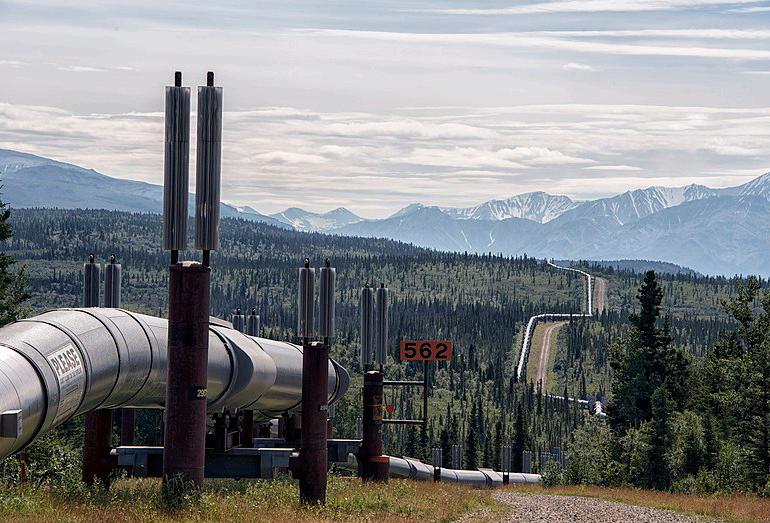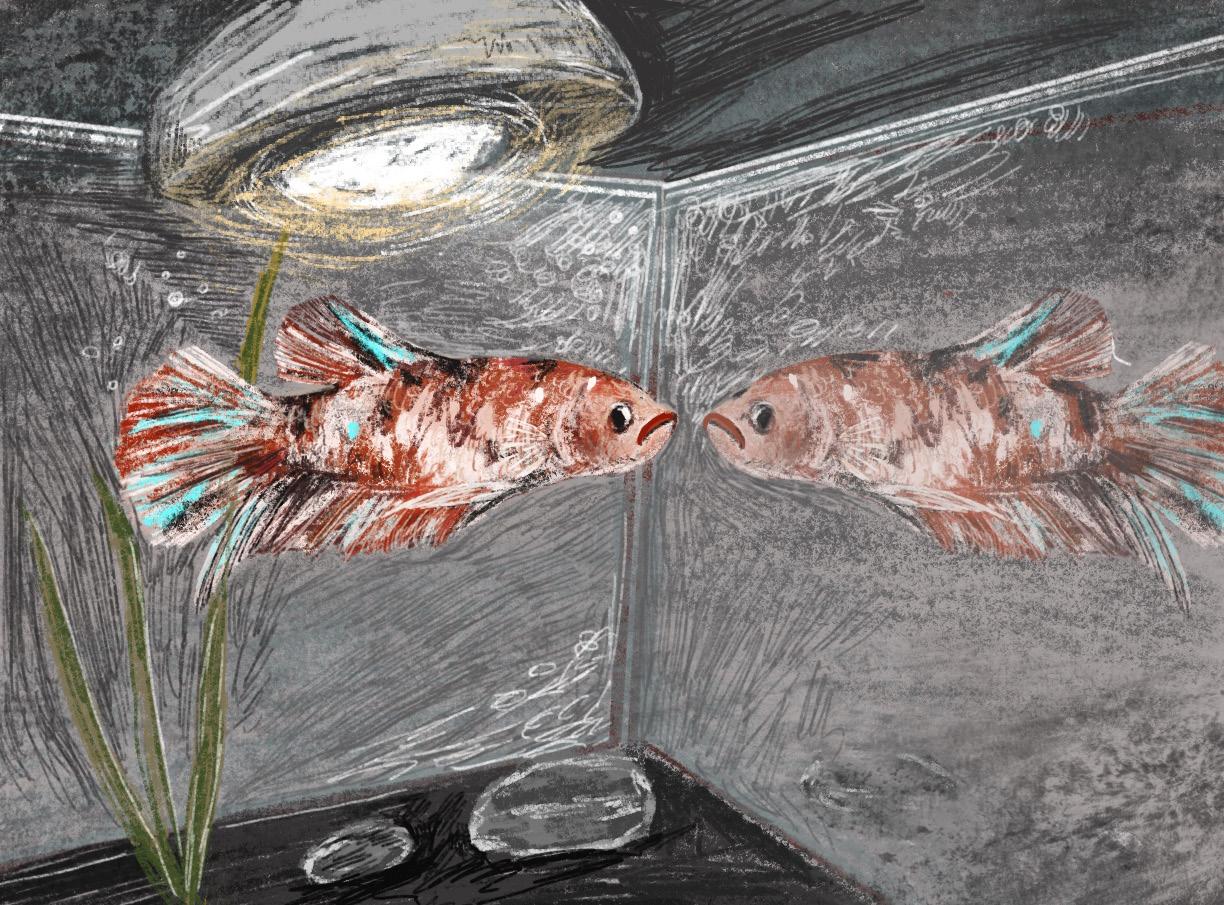
5 minute read
Research study finds that fish can recognize themselves in photographs
BY LILY BENN ’24 STAFF WRITER
A recent study by animal sociology and biology researchers concluded with the idea that fish may be able to recognize themselves not only in mirrors but in still photographs. This new information may indicate self-awareness in fish, specifically the Bluestreak cleaner wrasse, Science News reported.
This study is a continuation of research done with the same species of fish in 2019 when researchers first discovered that the Bluestreak cleaner wrasse could recognize itself in the mirror. The corresponding 2019 Science Daily article explains that this was tested by a widely recognized ‘mark’ test that has been studied in many species of animals in the past.
The article goes on to explain that this test requires that the subject, when presented with a mirror, be able to notice a mark put on its own body as itself, and not another member of its species. In both 2019 and 2022 mirror studies, researchers injected ink into their scales that re- semble what the fish normally recognize as a parasite, Science News reported. Science Daily notes that the test is a challenge for animals such as fish, who do not have limbs that can indicate touch, or have the mobility required to show that they know the mark is on their own body.
Instead of pointing to themselves, Science News explained, these wrasse fish indicated they knew it was their own reflection by exhibiting a body scraping behavior. However, both Science News and Science Daily report that this new information does not necessar- ily indicate self-awareness in these fish, or in many other animal species tested with the mirror ‘mark’ test. Science News cites Frans de Waal, a primatologist from Emory University of Atlanta who approves of the study, yet explains how the mirror test is not a universally accepted and reliable method of testing animal self-awareness.
Science News writes that species known to have strong cognitive abilities such as monkeys and ravens have not passed the mirror test. The article goes on to explain that other species rely less on sight, such as dogs who are stronger in recognition of scent.
The 2023 study takes this information further, by testing this same species of Bluestreak cleaner wrasse fish’s ability to self-recognize with the ‘mark’ test, this time with photographs of the fish. The paper, titled “Cleaner fish recognize self in a mirror via self-face recognition like humans,” published online by the Proceedings of the National Academy of Sciences of the United States of America, is available to be read by the general public. The ar-
Alarm raised following revised Alaskan oil project proposal
BY SARAH GRINNELL ’26 STAFF WRITER
With ambitious pledges to cut U.S. emissions and prioritize climate policy, the election of President Joe Biden in 2020 seemed in line with the goals of many environmental activists, The New York Times said. However, many of these climate advocates are now expressing their ire over the major step the Biden Administration has recently taken towards greenlighting an $8 billion ConocoPhillips oil project on the National Petroleum Reserve in Alaska, a project which activists and Indigenous communities argue will accelerate climate change and environmental damage to the Alaskan landscape, The New York Times reported.
According to The New York Times, in the wake of court appeals and challenges by a number of critics, the Bureau of Land Management has conducted an environmental analysis of the oil project, endorsing a scaled-back version of the original operation in order to reduce its ecological footprint. The Washington Post explains that this revised project, known as Willow, would reduce the five drilling sites to three so as to better protect wildlife. Despite these adjustments, Willow is still projected to produce roughly 600 million barrels of oil over the course of 30 years, The New York Times reported.
Due to the effects of climate change, Alaska is warming “faster than anywhere else in the world,” Alaska program director for Defenders of Wildlife Nicole Whittington-Evans said in a CBC News article. According to an Earthjustice article, this is posing threats to Arctic ecosystems in the form of sea-level rise, sea-ice melt and permafrost thaw. Additionally, the article explains that the National Petroleum Reserve-Alaska, where the drilling would take place, provides essential wildlife habitat for species such as polar bears, migratory birds and caribou. Critics of Willow, such as Whittington-Evans, argue that its approval will only aid in exacerbating this ecological harm at the “great expense of wildlife and communities.”
Despite this pushback, the president of ConocoPhillips Alaska, Eric S. Isaacson told Smithsonian Magazine that “Willow will benefit local communities and enhance American energy security while producing oil in an environmentally and socially responsible manner.” Alaska’s senators agree with him.
According to The New York Times, Republican senator Lisa Murkowski stressed that the project will create “thousands of good union jobs, and immense benefits that will be felt across Alaska and the nation” if it passes.
In fact, Alaska’s oil and gas industry contributed $3.1 billion to state and local governments in 2019, helping to pay for services such as public safety and education, The
Washington Post detailed. According to the article, this possibility of an economic upswing for Alaska is especially important, as Representative Mary Peltola emphasized Alaska’s recent economic struggles.
According to the New York Times, while some Alaska Native groups, such as the Alaska Federation of Natives and Alaska Native Village Corporation Association, support Willow and its economic prospects, other nations in the areas nearest to the project remain concerned.
For example, Rosemary Ahtuangaruak of the Iñupiat community told The New York Times that “the project encroaches on the habitat of the millions of migratory birds who use the area, as well as whales, polar bears and the more than 80,000 caribou that locals depend on for subsistence fishing and hunting.” If Willow is approved, she said, “her community would be surrounded by oil and gas projects.”

In a CBC News article, Siqiniq Maupin, executive director of Sovereign Iñupiat for a Living Arctic, highlighted the same concerns, that “Arctic Slope communities have suffered health issues and the loss of traditional practices and food sources because of oil extraction.”
Broader environmental groups in Alaska and nationwide have also chimed in. In a statement on their website, Earthjustice argues that “the Willow Project would permanently scar the largest undeveloped area in the United States and jeopardize the health and traditional practices of nearby Indigenous communities,” and points out that “over 30 years, the project would produce an estimated 590 million barrels of oil — enough to generate approximately 260 million tons of CO2 equivalent once consumed.”
“No other oil and gas project has greater potential to undermine the Biden administration’s climate goals,” Karlin Itchoak, Alaska regional director for The Wilderness Society, argued in a Wilderness Society article. According to The New York Times, Itchoak said, “if this project were to move forward, it would result in the production and burning of at least 30 years of oil at a time when the world needs climate solutions and a transition to clean energy.”
According to The New York Times, a final decision by the Biden administration is expected to come within the next month, but the divided responses to the project reveal the complexity of the situation. Peltola addressed this conflict between economy and climate in The Washington Post: “[O]f course every person on Earth wants us to be shifting to renewables … But most people also recognize you cannot do that with a snap of the fingers.”
However, as the various reactions show, if the project is approved, select Native communities and activists fear the U.S. will only move further away from that future of renewable energy production.










